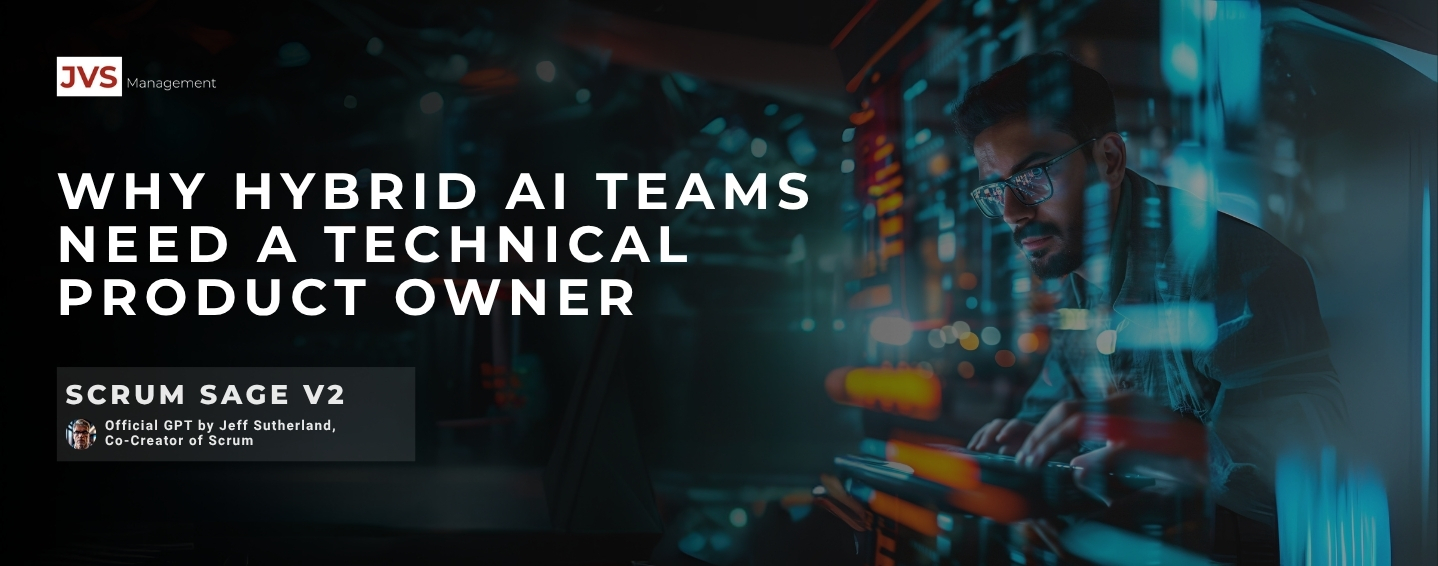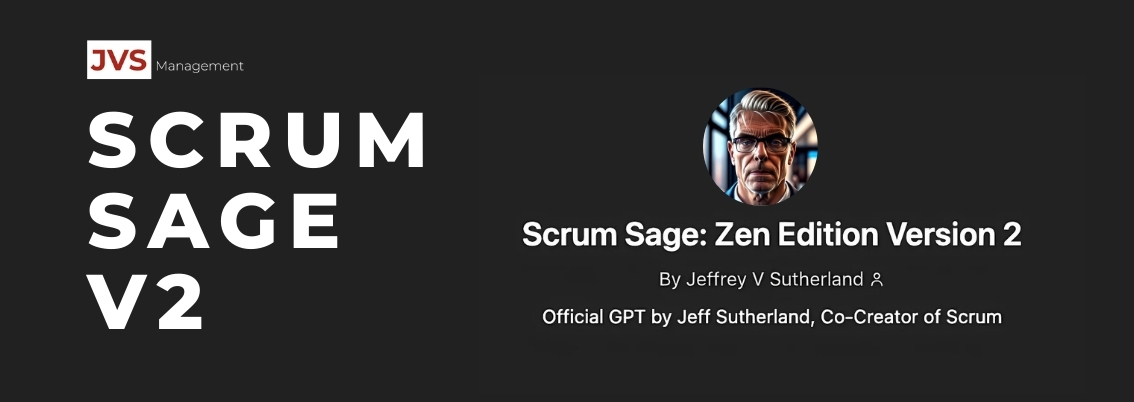Why Hybrid AI Teams Need a Technical Product Owner
Technical Product Owner for Hybrid AI Teams is a role quickly becoming essential in today’s complex AI-assisted software development landscape. At JVS Management, we’ve experienced firsthand that managing teams consisting of both human and AI contributors, such as ChatGPT, Claude, Grok, and Gemini 2.5, demands clear structure. Without defined processes, performance rapidly deteriorates; with them, velocity significantly improves.
In this blog, we delve into why a Technical Product Owner for Hybrid AI Teams, combining product leadership with engineering expertise, is critical. We also explore how principles from biology, physics, and Karl Friston’s neuroscience illuminate why Scrum’s simplicity is exceptionally effective in managing these innovative teams.
From Chaos to Clarity: A Scrum Reset
Initially, progress in our hybrid AI team was unpredictable. Bugs could spiral into infinite loops. Automated tests bred like rabbits. Security features halted our builds. That all changed when we reintroduced Scrum, tight sprints, five-minute standups, and a clear decision-maker. Velocity jumped nearly fivefold, and stress dropped significantly.
Scrum in a nutshell? Work in small increments, inspect results daily, and adapt immediately. But for hybrid teams, there’s a twist.
Complex Systems Need Smart Feedback Loops
Why does Scrum work, especially with AI teammates? The answer lies in Complex Adaptive Systems (CAS). In biology, organisms survive by constantly reducing the gap between what they expect and what they sense. This is what neuroscientist Karl Friston calls the Free-Energy Principle. Scrum mimics this biological loop, short sprints surface surprises early, enabling adaptation before failure compounds.
You can’t out-calculate a complex system. As Stephen Wolfram notes, some systems are computationally irreducible, you have to run them to see what happens. Scrum embraces this truth. It doesn’t try to predict the future. It helps you adapt to it.
Enter the Technical Product Owner (TPO)
In hybrid teams, the traditional role of “orchestrator” falls short. You need someone with both business insight and technical authority. A TPO fills that gap.
What does a TPO actually do?
- Reorders the backlog to reflect real-world impact
- Blocks work that fails security or quality thresholds
- Prioritizes tasks based on “Bayesian Surprise”, real-world deviation from expected outcomes
- Ensures that cloud-trained models behave in real-world hardware environments
This isn’t just about managing scope, it’s about safeguarding feedback loops that hybrid teams rely on.
Quality Without Slowing Down
Hybrid teams move fast, and brittle QA processes can’t keep up. We used a lean quality strategy built around:
- Modular components with defined inputs/outputs
- One “Golden Test” per component
- Runtime rules (like “output score must be between 0 and 1”) to catch edge cases
- Sprints driven by the most surprising failures
This approach enables continuous verification without drowning in thousands of unit tests.
How to Get Started
If your team is transitioning to hybrid intelligence, here’s a quick implementation roadmap:
- Rename the role to Technical Product Owner (AI)
- Use weekly sprints with shippable increments
- Hold daily standups (yes, even with AI agents)
- Implement Golden Tests and simple runtime rules
- Track anomalies with Bayesian Surprise metrics
The result? No task, human or machine, gets stuck for more than 20 minutes..
Scaling with a CPO-HI
Larger organizations may need a Chief Product Owner – Hybrid Intelligence (CPO-HI) to oversee multiple hybrid squads. This role owns the meta-backlog and enforces standards across teams, mirroring the structure of Scrum@Scale.
The Bottom Line
AI agents can generate code faster than ever, but physics, entropy, and real-world hardware still apply. Scrum provides the rhythm. The Technical Product Owner ensures the beat stays productive. Don’t settle for a generic “AI orchestrator.” Put someone in charge who can manage complexity, provide firm direction to AIs, maintain quality, and adapt fast.
Want to see what this looks like in action? Let’s talk.
Book a consultation with us today.


